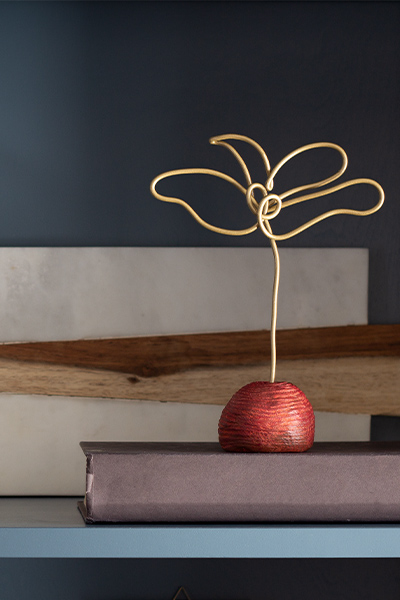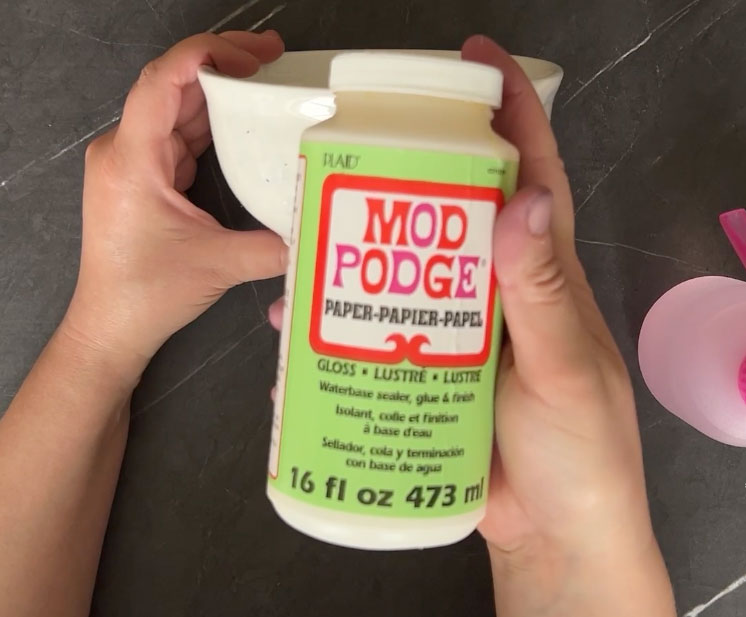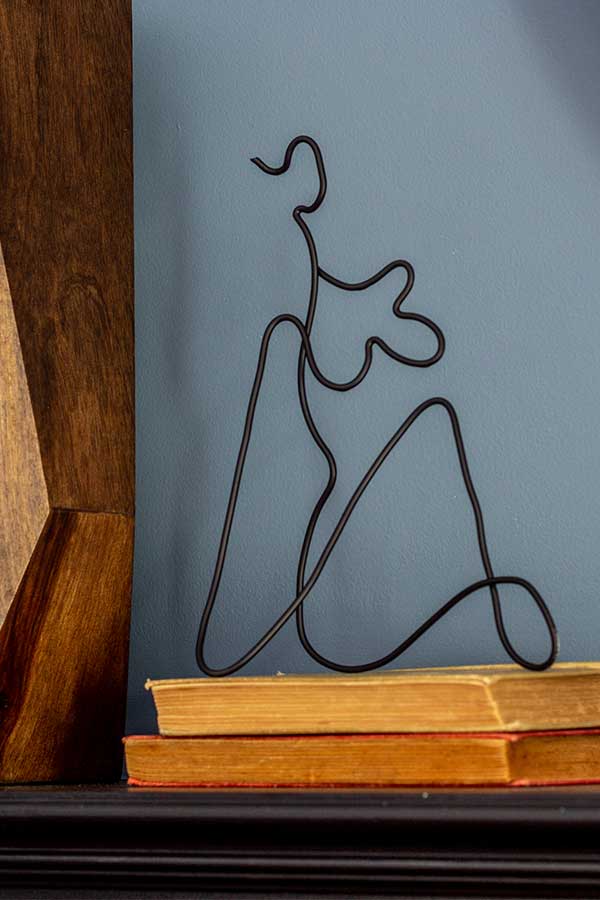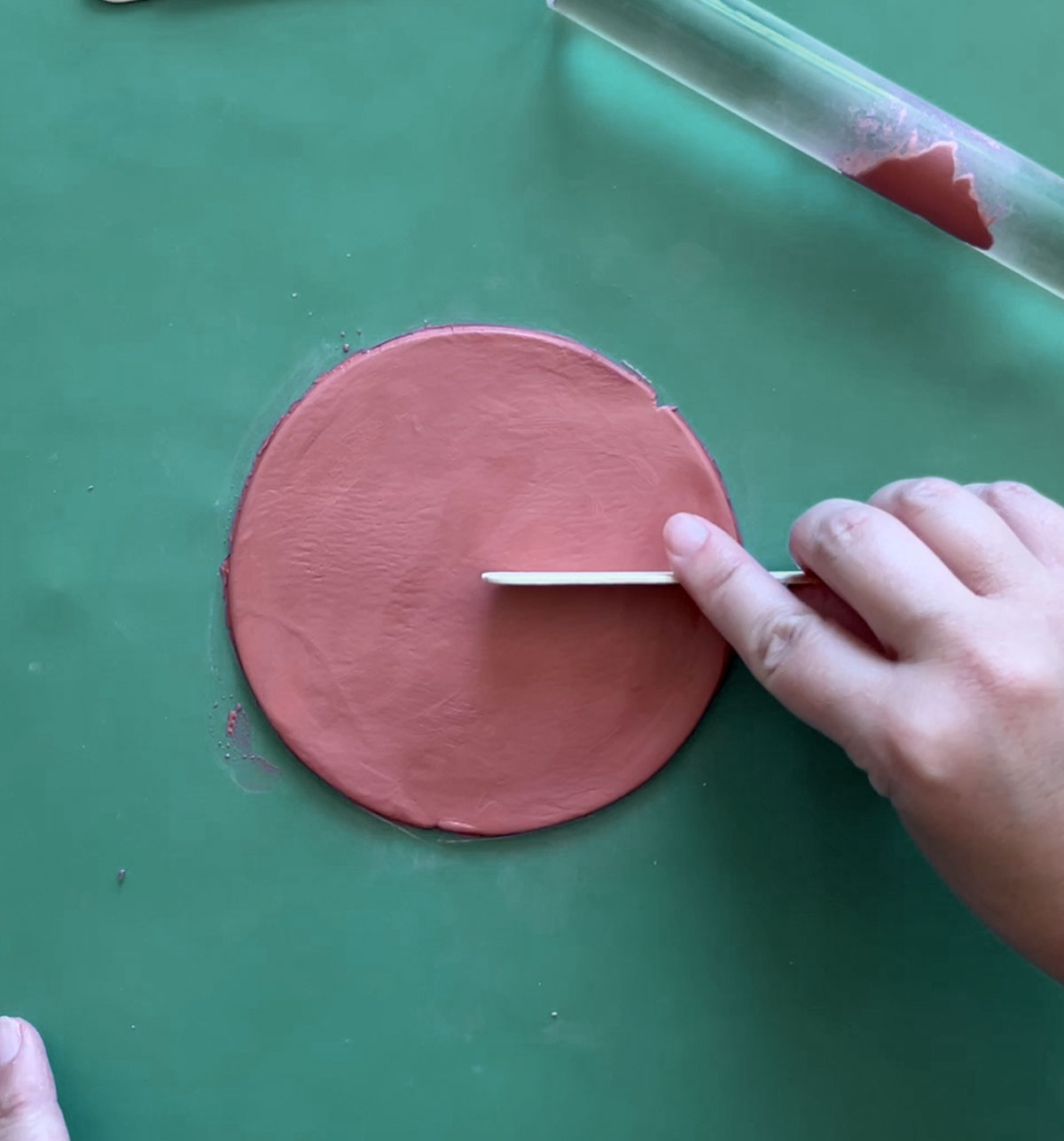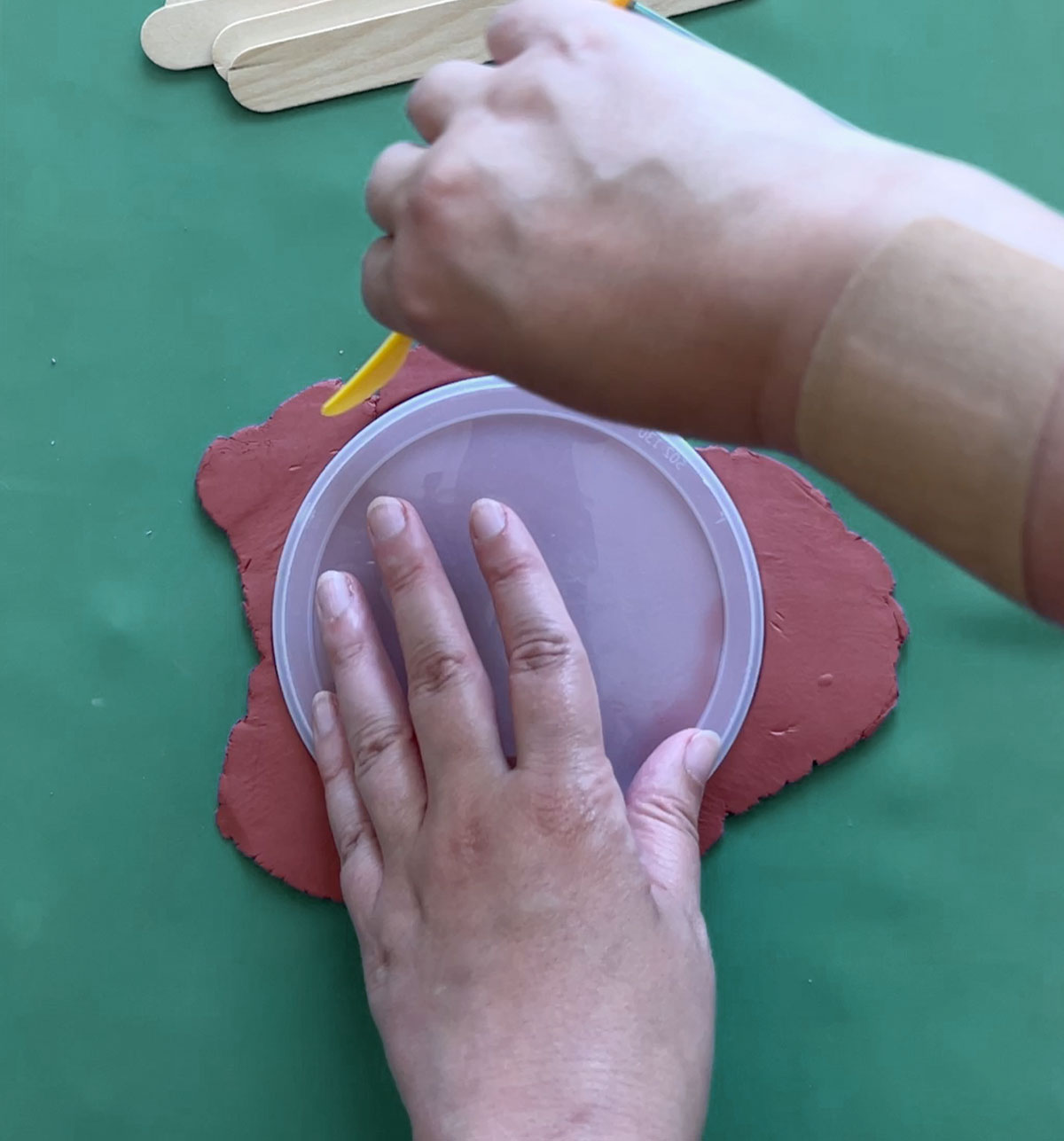What Kind of Wire is Used for Crafts? Essential Guide for Craft Enthusiasts
This post may contain affiliate links.
Crafting enthusiasts often experiment with various materials to create unique and intriguing designs. One such essential material is wire, which offers versatility and flexibility in various craft projects, including sculpting and jewelry-making. Different wires come in a range of materials, gauges, and strengths, each offering unique characteristics suitable for specific purposes.

Aluminum and copper wires are popular for crafters due to their pliability and ability to hold their shape well. While aluminum wire is easy to manipulate and does not require annealing, some artists prefer copper wire for its patina as it ages.
Sterling silver is another option, providing a higher-end touch for more sophisticated craftwork. Thinner beading wire is usually preferred for beading and using smaller beads, while larger, heavier beads may require thicker wire.
Selecting the right wire for your project can significantly impact your outcome, so it’s crucial to understand the characteristics and benefits of each wire type. Balancing properties like bendability, strength, and aesthetics will help you achieve the desired result in your craft creations.
Types of Craft Wire
Craft wires are made from various materials, each with unique benefits and drawbacks. Depending on the project, choosing the right option for the best results is essential. This section will focus on four types of craft wire: Aluminum, Copper, Stainless Steel, and Sterling Silver wire.
Aluminum Wire
Aluminum wire is a popular choice for many crafters due to its lightweight and malleability. It’s easy to bend, making it ideal for projects that require intricate designs or wire shaping.
Furthermore, it’s cost-effective, so this option can be preferred if you’re working on a large project with a tight budget. However, aluminum wire lacks the durability and strength of some other materials, so it might not be the best option for heavier or more structurally demanding crafts.
Copper Wire
Copper wire is known for its excellent electrical conductivity, making it ideal for crafts that involve wiring or electronics. Besides, it’s malleable and can hold its shape well, which can be especially useful in jewelry-making projects.
Due to its attractive reddish-brown color, copper wire adds an aesthetic appeal to the finished craft. Keep in mind that copper can tarnish over time, so periodic cleaning may be necessary to maintain its appearance.
Stainless Steel Wire
Stainless steel wire is a strong and durable option for craft projects that require additional support and sturdiness. Its resistance to rust, corrosion, and discoloration makes it a low-maintenance choice, perfect for outdoor or long-lasting crafts.
However, stainless steel can be harder to manipulate and work with compared to other wire materials, making it less suitable for intricate designs.
Sterling Silver Wire
Sterling silver wire is a premium option for high-quality crafts, especially jewelry making. Its lustrous finish adds an elegant touch to any project. Sterling silver wire is more malleable than stainless steel but still offers reasonable strength and durability, allowing for intricate designs that can withstand regular wear.
As a more costly option, sterling silver wire is ideal for projects where the finished product’s appearance and materials’ quality are of utmost importance.
Wire Shapes and Sizes
When it comes to crafting with wire, there are several shapes and sizes available to suit various projects. Three of the most common wire shapes are Round, Half-Round, and Square. Understanding these shapes and their properties will help you to choose the right wire for your craft project.
Round
Round wire is the most common type of wire used in crafts such as jewelry making, wire wrapping, and sculpture. Its uniform, circular shape makes it versatile and easy to work with.
The wire is measured in gauges or millimeters, with the gauge indicating the diameter of the wire. A smaller gauge number means a thicker wire, while a larger gauge number indicates a thinner wire. For example, a 22-gauge round wire has a diameter of about 0.64 mm, making it suitable for most bead-stringing and wirework projects1.
Half-Round
As the name suggests, half-round wire has a flat side and a rounded side, which gives it a unique profile. This shape is especially useful for wire wrapping projects, providing a neat, streamlined appearance when wrapped around stones or other components.
The flat side lies flush against the material you’re working with, while the rounded side adds dimension and a polished finish. Just like round wire, half-round wire comes in various gauges and millimeter measurements to suit different project needs.
Square
Square wire has four straight, equal sides, giving it a distinctive look and feel. It is often used in wire weaving and braiding techniques, creating structured geometric patterns in jewelry or other wirework projects.
Its angular shape helps to maintain crisp lines and adds a modern architectural touch to finished pieces. Square wire is also available in various gauges and millimeters, allowing for different levels of thickness and flexibility depending on your project requirements.
In conclusion, round, half-round, and square wire shapes offer different aesthetics and functionality for crafting projects. Understanding their properties and available sizes will help you make informed choices and produce beautiful, high-quality finished works.
Wire Hardness and Flexibility
When working with wire for crafts, it is crucial to understand the different levels of wire hardness and flexibility to choose the right type for your project. Typically, there are three types of wire hardness: dead soft, half-hard, and full-hard. Each type offers varying degrees of malleability and stiffness suited for different craft applications.
Dead Soft Wire
Dead soft wire is very soft and can be bent with your hands, making it highly malleable. This type of wire is ideal for wire-sculpted jewelry and wire art because of its pliability. The softness of dead soft wire allows for easy manipulation, which is perfect for creating intricate designs and detailed work.
Half-Hard Wire
Half-hard wire is moderately stiff and requires the use of tools for bending and shaping. This type of wire has been hardened during manufacture but is not fully tempered, which means it still retains some flexibility.
Half-hard wire is suitable for jewelry making and other crafts that require a bit more stiffness than dead soft wire. The increased rigidity allows for more structural support in your crafting projects, while still providing some room for design flexibility.
Full-Hard Wire
Full-hard wire is tempered and stiff, making it the least malleable option of the three types. This type of wire is rarely used for jewelry making and crafting because its stiffness can make it challenging to work with. However, full-hard wire can be used when extra rigidity and support are needed, such as in wire sculpture frameworks or heavy-duty craft applications.
In summary, the type of wire you choose for your crafts will depend on your project requirements and desired level of flexibility. Dead soft wire is the most malleable, allowing for intricate designs and details, while half-hard wire offers a balance between stiffness and flexibility. Although rarely used in crafting, full-hard wire can provide substantial support and rigidity for specific applications.
Understanding Wire Gauge
Gauge Measurements
Wire gauge is a crucial aspect to consider when choosing wire for crafts. The wire’s thickness, or gauge, impacts its flexibility and durability. Most craft wire is sold in American Wire Gauge (AWG) measurements, with metric equivalents also available. For instance, a 12 AWG wire measures 2 mm thick, while an 18 AWG wire is 1 mm thick. You can find a helpful craft wire comparison chart to easily determine the most appropriate gauge for your project based on its diameter and usage.
| AWG | Metric (mm) |
|---|---|
| 12 | 2.0 |
| 14 | 1.6 |
| 16 | 1.3 |
| 18 | 1.0 |
Low Gauge versus High Gauge
When selecting materials for crafts, it is essential to understand the difference between low-gauge and high-gauge wire. Counterintuitively, lower gauge numbers indicate thicker wire, while higher gauge numbers represent thinner wire. For example, a 12 AWG wire is thicker than a 16 AWG wire.
Thicker wires (low gauge) provide more strength and durability but may be less flexible and more challenging to manipulate. On the other hand, thinner wires (high gauge) are more pliable and easier to twist or bend but may not hold their shape as well as thicker wires.
Ultimately, the choice between low-gauge and high-gauge wires depends on the specific requirements of your craft project, such as required strength, flexibility, and aesthetics.
Tools for Working with Wire
When working with craft wire, having the proper tools on hand to bend, shape, and cut the material is essential. This section will discuss various tools used for working with wire, specifically focusing on pliers, wire cutters, and tape.
Pliers
Pliers are essential for bending and shaping wire for various craft projects. There are several types of pliers that can be used when working with wire:
- Round-nose pliers: These pliers are useful for bending wire into smaller round loops or circles, as their jaw consists of two smooth, slender cones. They are especially good for jewelry making due to their versatility and ability to create precise shapes.
- Flat-nose pliers: These pliers feature a flat and wide jaw, making them perfect for gripping, straightening, and holding wire in place during crafting.
- Chain-nose pliers: Similar to flat-nose pliers, chain-nose pliers are great for holding and gripping wire. However, their smooth, slightly tapered jaw is ideal for accessing tight spaces and assisting with intricate wirework.
Wire Cutters
Wire cutters are another essential tool when working with craft wire. The purpose of wire cutters is to trim and snip the wire to the desired length. There are several types of wire cutters to choose from:
- Flush cutters: These provide clean, precise cuts with little effort. They are perfect for cutting lightweight wire and are highly recommended for jewelry-making projects.
- Diagonal cutters: Also known as side cutters, these are suitable for cutting various wire thicknesses. The diagonal angle of the cutting edge makes it easy to reach tight spaces and allows for a clean cut.
- Heavy-duty cutters: Ideal for cutting thicker or harder wires, heavy-duty cutters are designed to withstand significant pressure and provide a clean, precise cut without damaging the tool.
Tape
Tape is often overlooked but can be a useful tool when working with wire crafts. It can serve multiple purposes, such as:
- Holding wire in place: Using tape can prevent the wire from slipping or moving while crafting, allowing for a more stable and precise work area.
- Protecting surfaces: If you’re working on a delicate surface, placing tape under the wire can prevent potential scratches or damage from the wire or your tools.
- Marking measurements: You can use tape to mark measurements directly on the wire, ensuring consistent sizes and dimensions throughout your project.
In summary, having the appropriate tools, such as pliers, wire cutters, and tape, enhances the overall crafting experience when working with wire. These tools make it easier to create intricate designs and produce high-quality projects.
Jewelry Making with Wire
Bead Stringing Wire
Bead stringing wire is a popular choice for creating intricate beaded jewelry designs. It is composed of several thin steel wires that are woven or wound together and often coated with a thin layer of nylon for protection and flexibility source.
This tough, yet supple wire is available in various gauges and strengths, with finer gauges being used for delicate designs and heavier gauges for larger, more robust pieces.
Wire for Earrings and Clasps
When crafting earrings and clasps, certain wire gauges are recommended for different applications. For instance, 20 AWG (0.81mm) wire is perfect for creating ear wires, while 18 AWG (1.02mm) or 1mm wire can be used for simple or wrapped loops connecting chunkier beads source. It’s essential to select the proper gauge to ensure the finished piece is both comfortable to wear and secure.
Popular Brands and Materials
There are numerous brands and materials available for wire jewelry making. Some well-known brands include Artistic Wire, Parawire, and Beadalon. As for materials, you’ll find a wide range of options, such as:
- Copper: An affordable choice, often used for practice or base wires in designs.
- Sterling Silver: A precious metal that offers a bright shine and is suitable for higher-end designs.
- Gold-filled: Provides a luxurious appearance at a more reasonable price compared to solid gold.
- Aluminum: Lightweight, easy to manipulate, and available in multiple colors, making it a versatile option.
Choosing the right wire type and material depends on your desired jewelry style and budget. Experimenting with various options will help you find the perfect wire for your unique creations.
Frequently Asked Questions
Best wire for sculpting?
When it comes to sculpting, a versatile and easy-to-work-with wire is essential. The PandaHall Elite Craft Wire is a popular choice for sculptors due to its pliable nature and affordability. This wire is made of silver-plated copper, which makes it suitable for various sculpting projects.
Ideal craft wire gauge?
The ideal gauge for craft wire depends on the specific project and its requirements. A 20-gauge wire, like the one offered by Darice Craft Wire, is a good starting point as it’s versatile and can be bent with ease for most projects. Thicker gauges might be required for structural support, while thinner gauges are useful for delicate details and intricate designs.
Recommended wire for clay sculpture?
For clay sculpting projects, it’s important to choose a wire that offers the right balance between strength and flexibility. Many artists prefer using wire made from materials like brass or aluminum since they provide excellent support without damaging the clay. A heavier gauge armature wire is a pliable and easy-to-work wire suitable for clay sculpture projects.
Top choice wire for wire art?
Wire art projects often require a wire that can hold its shape or be manipulated easily. An artistic wire like the Mandala Crafts Aluminum Wire is an excellent option as it can be easily shaped into various forms, patterns, or wire-wrapped around objects. Nylon jaw pliers can also be helpful for incorporating wire components into the finished piece seamlessly.
Common types of craft wire?
There are several common types of craft wires used in various projects, such as copper, silver-plated copper, brass, and aluminum. Copper and silver-plated copper wires, like the ones offered by PandaHall Elite and Darice, are popular choices due to their flexibility and affordable price points. Brass and aluminum are also widely used due to their unique color, strength, and versatility.
What is hobby wire?
Hobby wire refers to a type of wire specifically designed for use in arts and crafts projects, such as sculpting, jewelry-making, and wire art.
These wires are typically made from materials like copper, brass, and aluminum and are available in different gauges to suit various project requirements. Soft Flex’s Craft Wire and Darice’s craft wire are examples of hobby wires that are commonly used in the crafting community.
